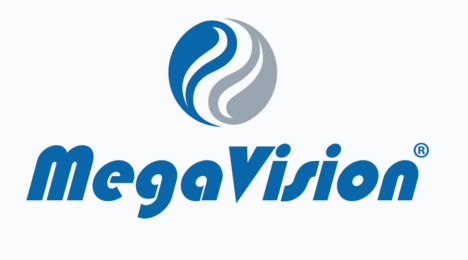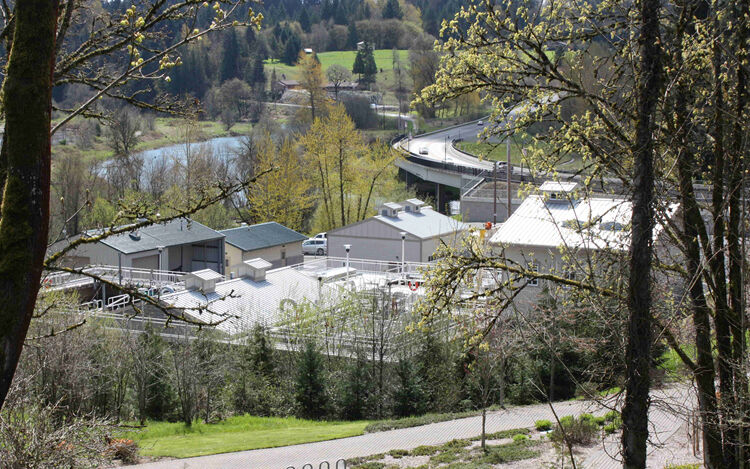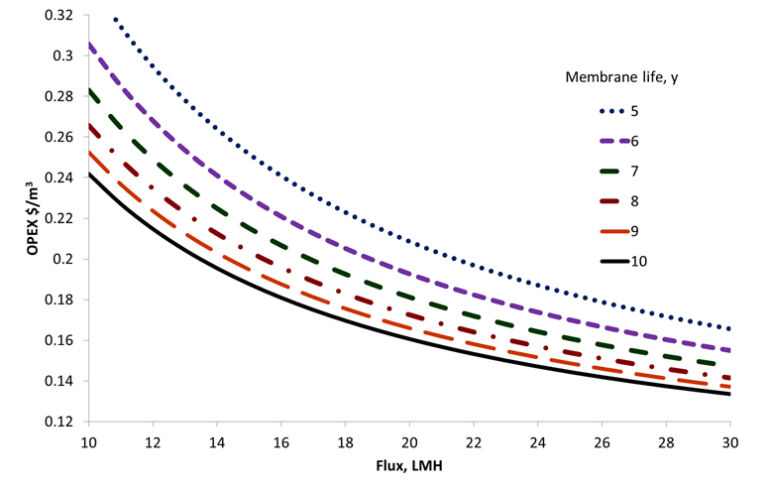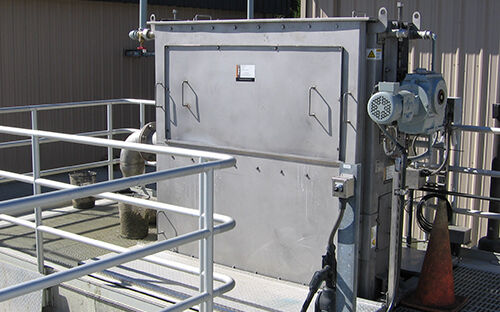Industrial MBRs − landfill leachate sector

Membrane bioreactors in the landfill leachate sector
Landfill leachate is generated from liquids which either form part of the waste entering the landfill or from rainwater. It contains a wide variety of dissolved and suspended organic and inorganic compounds. The organic fraction characteristics are dependent on:
- the feed composition (which relates to the type of waste delivered)
- the climate
- the location (or 'cell') within the landfill site, and
- leachate age.
A key property of the leachate is its biodegradability (as reflected by the BOD/COD ratio), which tends to decrease with age as the waste decomposes. The decreased biodegradability of old leachates is indicated by BOD/COD ratios generally in the range 0.05−0.2 but predominantly below 0.1 for leachates more than ~10 years old.
Metals and other inorganic substances such as sulphate and chlorides continue to dissolve and leach from the landfill over many years, the prevailing anaerobic conditions reducing sulphate to sulphide. Metal sulphides are then eventually formed and precipitated back into the solid phase, maintaining low concentration values of sulphate and metals in old stabilised leachates.
Conventional leachate treatment
Simple conventional aerobic suspended growth biological processes such as CAS, aerated lagoons and SBRs have all been successfully employed for treating young leachate, sometimes combined with UASB technology as pre-treatment. Constructed wetlands have also been implemented in some instances.
However, these technologies are significantly challenged by old leachates due to the presence of biorefractory and toxic contaminants as well as the variable loads arising.
This results in the requirement of multi-stage operations which may encompass both biological aerobic and anaerobic technologies alongside physicochemical techniques. The latter encompass physical separation by filtration or adsorption, ammonia absorption or stripping, chemical dosing for precipitation or coagulation and/or oxidation, with increasing focus on electro-oxidation.
Consequently, the plant footprint can be significant and may still only provide modest COD removal unless aggressive oxidative conditions are employed.
Treating landfill leachate with MBR technology
Membrane bioreactors have been implemented for the treatment of old landfill leachate since the early 1990s. They offer the benefit of both enhanced biotreatment, providing comparable COD removal to the conventional aerobic suspended growth processes at reduced HRTs, and an effluent of low SDI suitable for purification by RO/NF with no further requirement for post-treatment.
A few landfill leachate MBR-based technologies include downstream NF or RO membranes integrated into the process, such as the WEHRLE Biomembrat®plus process. While such post-treatment provides reliably high-quality effluent, a concentrate stream is generated as a result which demands further treatment. In the case of the WEHRLE process, this stream is treated by AC and returned to the anoxic zone of the bioreactor.
As with conventional processes, MBR installations achieve widely varying COD removals according to the age of the leachate (and specifically the biodegradability of the organic content) and the HRT. Anaerobic MBRs can be [AS] effective as aerobic technologies for removing COD, with ~90% removal at a 2−7 d HRT reported for young leachate, but demand downstream treatment to remove residual ammonia.
Landfill leachate sludge is perhaps one of the least filterable of all those generated from MBR treatment of industrial effluents. Whereas treatment of a food processing effluent with an sMBR can yield fluxes of over 150 LMH and permeabilities in excess of 40 LMH, the application of the same system to a mature landfill leachate can yield corresponding flux or permeability values that are 2−3 times lower.








